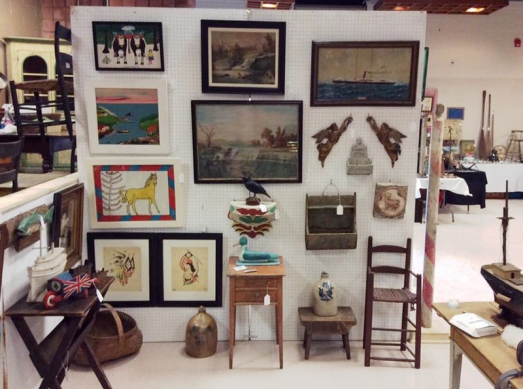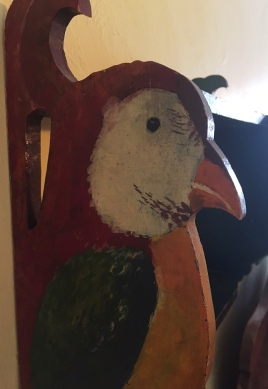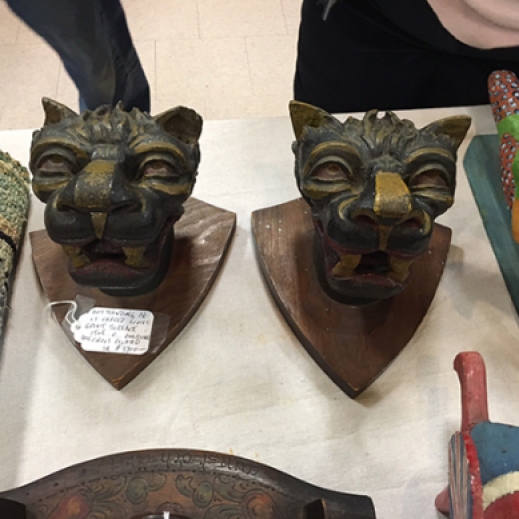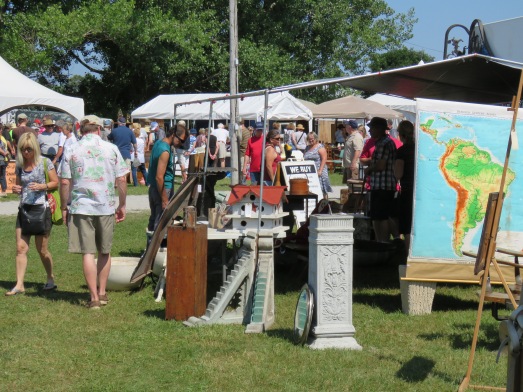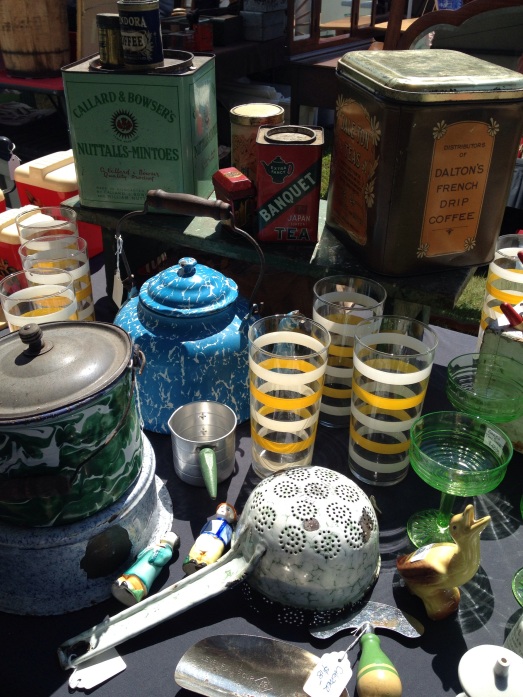I’ve always been a natural collector. If I find something I like, a part of my brain immediately lights up and says “maybe you should get another one!”. It’s just natural for me to be curious about objects and enjoy having them around me. To temper my instincts, I have made a concerted effort not to let my collections get too big, or too expensive. I frequently move things to better display everything, and try to know when it is time to say goodbye. If you are a collector, I offer three simple rules I’ve followed in my decades of collecting. With these rules I’ve been able to enjoy my collections and achieve balance in my space.

A small collection of vintage items, grouped by colour.
#1 – Set a Size Limit, then Follow the “One In, One Out” Rule: When you first get excited about something it can be easy to keep acquiring, especially if that item hits your sweet spot in terms of availability and price. For me recently, that item has been vintage McCoy planters. These beauties are found all over North America, but they’re still rare enough that they’re fun to spot. The small ones sell for around $20. They are lovely to me, and I use some of them to actually grow plants, so I can convince myself they’re even useful. With so many reasons to love them, what’s the harm in buying just one more?
The harm, simply, is that eventually I have too many. Hitting a wall with collection size is expected. Collections tend to fill the available space, but there are warning signs when it’s time to stop – You won’t appreciate the ones you have as you try to find a place for another new addition. You will stop being able to display them. You will hate having to dust them. You may look at them and worry about what else you could have done with the money. At this point, you can either sell the whole collection (dramatic but effective!) or you can decide how many is enough, and keep your collection at that number.
Once you’re at your limit, I’m a fan of the “one in, one out” rule because instead of a dead end to your collecting, you will now enter a period of refinement. For instance, now instead of buying three $20 McCoy planters, I will wait to buy a much nicer one for $60. Then I get rid of one of my lesser pieces by selling it so the collection takes up the same amount of space. I’m learning as I go, and investing in pieces that are special. This evolution is how great collections are made.

Most of my McCoy planters are displayed on this antique moveable staircase. The staircase is from a nunnery in Quebec.
#2 – Display Your Collections: Want a really simple way to tell if you enjoy a collection? Look around and see if the collection is on display or shoved away in a box somewhere. There are exceptions (temporary storage issues etc), but in general, if you should have a collection you will have it displayed. You will make space. It will make you happy to see it, because it will reflect an interest or affection you currently hold.
I love to display my collections, no matter how small. Learning how to attractively display your collections will make your home more interesting and personal. The golden rule of display is “like with like”. Even three similar items look better displayed together. Aim for a triangle shape in your display (larger items in the back, smaller in front). Group your little collections and put them out where you can see them. Give them some love. Don’t be embarrassed or think that something has to be expensive or “impressive” to be out. Your home is your sanctuary, and if something makes you happy put it where you can see it.
#3 – Beware of Nostalgia and Learn When to Let Go: You’re a growing person, so don’t expect all your collections to last. Beware of nostalgia that might make you hold onto an item you no longer actually enjoy. Ask yourself if you’re just keeping something because you’ve always kept it. Or if you have good memories of collecting something (I bought this with dear old dad!) and so parting with the item feels cruel. If this is the case my advice is to shrink the collection to your absolute favourite or most meaningful pieces. I recently had to do this with china inherited from my grandmothers. I didn’t want to keep full sets of dishes, but I did carefully go through the sets to keep a small sample. Then I mounted an assortment of plates on my kitchen wall. I see these plates every day and they mean something to me. This small display is a much better use of these items than having boxes of dishes forgotten in the basement.

Once a collection is no longer making you happy, it’s okay to get rid of it. Honest. You don’t have to feel like you wasted money or time or space. It served its purpose. My mother spent years collecting a full 100 antique biscuit barrels (yes, she kept count). She loved them, but then one day she decided enough was enough. She sold all but a few of her best ones. She moved on to collecting birds for her kitchen. Learn to embrace change and say goodbye to your items when it’s time to let them go.

Sometimes collections are small and silly, like this group of china dog figurines. I displayed them with a book jacket photo of Kurt Vonnegut because he liked dogs.
It takes effort to enforce these rules, but collecting is still a great source of joy for me. It’s just how I’m wired. There is a specific excitement in a new find, and the pride of displaying that makes my space comforting to me. By thinking critically, and only keeping what I want to display, I have things I love and room to breathe. Life keeps going, change is inevitable, and the good collector knows how to go with the flow. Happy collecting!




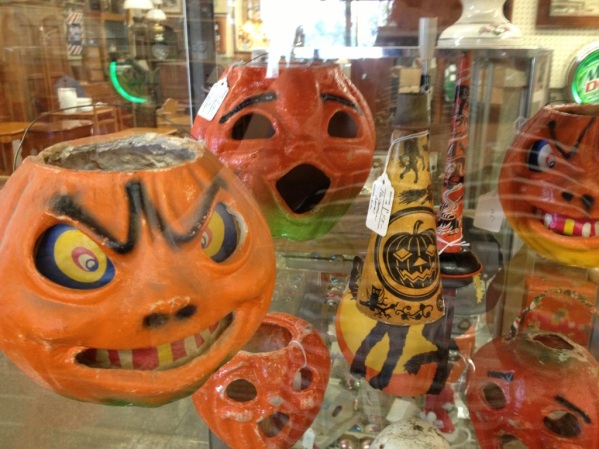




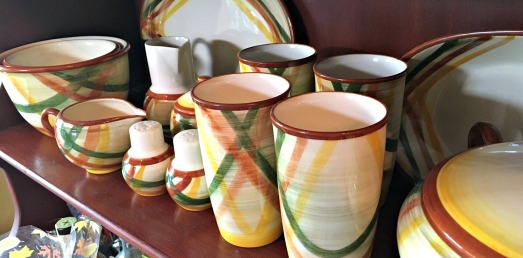



 Kitchens are funny rooms. They’re designed for utility, but they’re also given a special place as the “heart” of the home. They’re hospitable spaces, so it makes sense that even modern kitchens benefit from a lived-in element. Decorators have been injecting rustic details like corbels and chalk boards into kitchen design for a while, but I think one of the most interesting objects you can add to your kitchen is an antique or vintage sign.
Kitchens are funny rooms. They’re designed for utility, but they’re also given a special place as the “heart” of the home. They’re hospitable spaces, so it makes sense that even modern kitchens benefit from a lived-in element. Decorators have been injecting rustic details like corbels and chalk boards into kitchen design for a while, but I think one of the most interesting objects you can add to your kitchen is an antique or vintage sign.









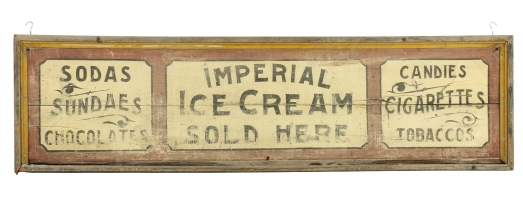 Vintage and antique signs are sought after by decorators looking for that one amazing piece, or collectors who have a space on the wall (and isn’t there always room for just one more?). With a little effort, you can find an a sign that speaks to you. Whatever your style or budget, old signs and kitchens are a match made in heaven.
Vintage and antique signs are sought after by decorators looking for that one amazing piece, or collectors who have a space on the wall (and isn’t there always room for just one more?). With a little effort, you can find an a sign that speaks to you. Whatever your style or budget, old signs and kitchens are a match made in heaven.



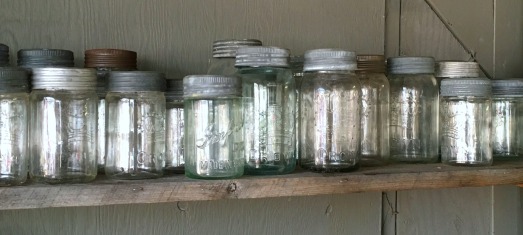







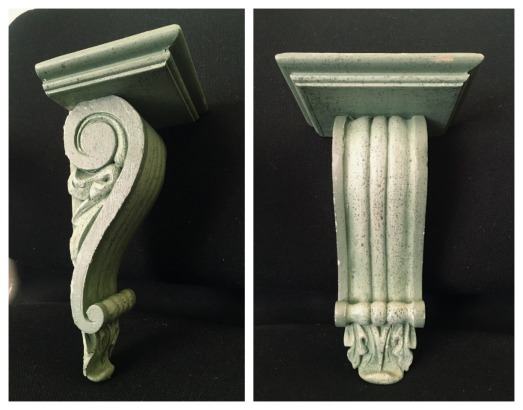
 This summer we took a sunny drive to
This summer we took a sunny drive to 









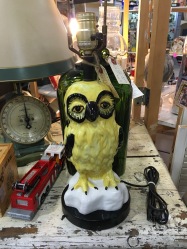

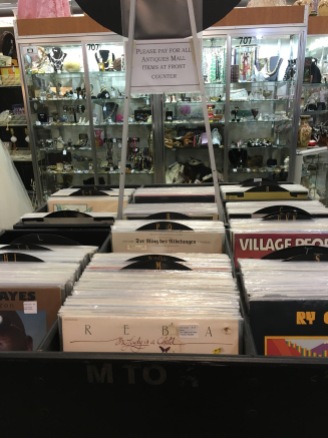









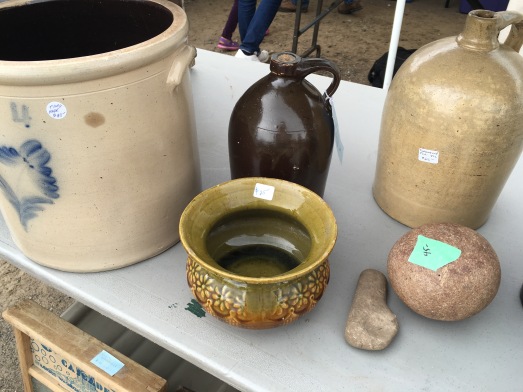
 We left Aberfoyle with a few bags of treasures and two decorative metal doors for my parent’s garden. I’m happy with my purchases and I have a feeling I could easily buy something every time I visit. Aberfoyle was a great way to spend a day, in a beautiful venue, with a lot of interesting items to discover. It’s a great show that rewards all levels of antique and vintage hunters. I will definitely try to visit again for the smaller Sunday market during the summer, and the next special show this fall.
We left Aberfoyle with a few bags of treasures and two decorative metal doors for my parent’s garden. I’m happy with my purchases and I have a feeling I could easily buy something every time I visit. Aberfoyle was a great way to spend a day, in a beautiful venue, with a lot of interesting items to discover. It’s a great show that rewards all levels of antique and vintage hunters. I will definitely try to visit again for the smaller Sunday market during the summer, and the next special show this fall.


















